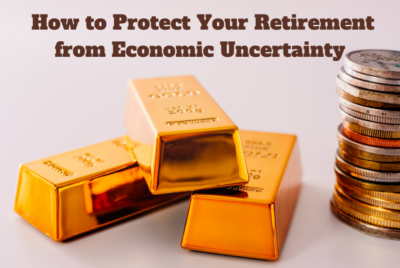The Enduring Buying Power of Gold: From 1930 to 2024
**Introduction**
Gold has been a symbol of wealth and economic security for centuries, and its role as a measure of buying power is a fascinating aspect of economic history. In this comprehensive exploration, we will delve into how the enduring buying power of gold has maintained its value across nearly a century, exemplified by its ability to purchase an average-priced American home in both 1930 and 2024 with the same quantity of gold.
Historical Overview of Gold as Currency
Origins of Gold as a Monetary Instrument
Gold’s journey as a cornerstone of economic exchange began over 5,000 years ago. Ancient civilizations recognized gold for its rarity and beauty, adopting it as a standard medium for trade and wealth preservation.
Gold Standard: Definition and Global Adoption
In the gold standard monetary system, countries directly linked their currency values to gold. This standard facilitated international trade with a stable exchange system until most countries largely abandoned it during the 20th century.
Gold in 1930
The Economic Landscape of 1930
In 1930, the United States was grappling with the onset of the Great Depression, an era marked by unprecedented economic downturn and hardship.
Price of Gold and Housing in the 1930s
During this period, authorities fixed the price of gold at $20.67 per ounce, and the average home price was approximately $4,100, aligning with the purchasing power of about 200 ounces of gold.
Impact of the Great Depression
The depression led to a deflationary environment, where gold’s purchasing power increased, even as prices of goods and real estate plummeted.
Economic Policies Affecting Gold
The Removal from the Gold Standard
The U.S. officially departed from the gold standard in 1933, allowing more flexibility in monetary policy during economic crises.
Bretton Woods System and Its Impact on Gold
Post World War II, the Bretton Woods Agreement established the U.S. dollar as the world reserve currency, pegged to gold at $35 per ounce, influencing global economic stability.
Recent Monetary Policies and Gold Prices
Modern monetary policies, such as quantitative easing, have occasionally led to fears of inflation, during which gold prices often rise as investors seek safe-haven assets.
Gold’s Buying Power Over the Decades
Analyzing Different Decades: 1950s, 1970s, 1990s, 2010s
Each decade brought significant economic events that tested and at times confirmed gold’s status as a reliable store of value.
Comparisons to Other Investment Vehicles
When compared to real estate and bonds, gold’s return on investment is generally lower in terms of growth but higher in stability and risk mitigation.
Gold in 2024
The Modern Economic Environment
As of 2024, global economic conditions are vastly influenced by technological advancements, geopolitical tensions, and pandemic recovery efforts.
Current Prices of Gold and Real Estate
Gold prices fluctuate based on a complex interplay of demand, supply, and investor sentiment, with current trends showing a price of around $2,000 per ounce.
Factors Influencing Today’s Gold Market
The demand for gold continues to be shaped by its role in technology, jewelry, and as an investment hedge.
Case Study: Buying a House with Gold in 1930 vs. 2024
Detailed Comparison of Real Estate Value
Despite nearly a century’s difference, the purchasing power of gold in terms of real estate remains remarkably consistent.
Amount of Gold Required for a Purchase
Both in 1930 and in 2024, roughly 200 ounces of gold could secure an average-priced American home, illustrating gold’s enduring value.
Socioeconomic Factors Influencing the Comparisons
Adjustments in gold’s value are frequently a reflection of broader economic shifts rather than changes in the intrinsic value of gold itself.
Investment Perspective
Gold as a Long-term Investment
Gold is often seen as a conservative investment, suitable for preserving value rather than seeking high returns.
Risk and Return Analysis
Gold’s risk profile is lower compared to equities and real estate, particularly during times of economic uncertainty.
Diversification Benefits of Gold
Including gold in an investment portfolio can reduce volatility and provide a hedge against inflation.
Future of Gold
Predictions Based on Current Economic Trends
Economic analysts predict that gold will continue to hold significant value, potentially increasing as global markets face uncertainty.
Technological and Market Influences on Gold
Advances in mining technology and changes in market dynamics could alter how gold is valued and traded.
Sustainability and Ethical Sourcing of Gold
The gold industry faces increasing pressure to improve its environmental and ethical standards.
Expert Opinions
Insights from Economists and Market Analysts
Experts maintain that gold’s role as a financial haven will likely persist, given its historical performance during economic downturns.
Historical Perspectives on Gold’s Value Stability
Historians and economic scholars emphasize the consistent value of gold over millennia, underscoring its unique position in the financial world.
Conclusion
Summary of Findings
The examination of gold’s purchasing power from 1930 to 2024 highlights its remarkable stability and enduring appeal as a financial asset.
The Enduring Relevance of Gold in Modern Economics
Gold continues to play a crucial role in global economics, serving as a dependable asset in diverse investment portfolios and a standard for financial security.
Frequently Asked Questions
- **How has the price of gold remained stable enough to buy a house over such a long period?**
**Answer:** The enduring stability of gold’s price is largely attributed to its status as a “safe-haven” asset. Throughout economic fluctuations, including inflation, recessions, and geopolitical uncertainties, gold tends to retain its value. Central banks and investors often turn to gold during times of economic instability, which helps maintain its purchasing power. Additionally, gold is a finite resource, which helps keep its value as demand can exceed easily accessible supply.
- **Why is gold considered a good investment, even if it doesn’t offer high returns like stocks or real estate?**
**Answer:** Gold is considered a good investment mainly due to its risk mitigation properties. While it may not offer the high returns of stocks or real estate during certain periods, it provides stability and acts as a hedge against inflation and currency devaluation. Gold’s low correlation with other financial assets makes it an excellent tool for portfolio diversification, helping to reduce overall investment risk.
More Questions
- **Can the historical comparison of gold buying a house in 1930 and 2024 be applied globally?**
**Answer:** While the specific example of gold’s purchasing power relative to U.S. real estate may not directly apply globally, the general principle holds true in many parts of the world. Gold is universally valued and serves as a consistent store of wealth. However, the exact buying power of gold can vary based on local economic conditions, currency strength, and the local real estate market.
- **What factors could potentially decrease gold’s buying power in the future?**
**Answer:** Potential factors that could decrease gold’s buying power include significant improvements in mining technology that lead to an oversupply, a large-scale move away from gold as a reserve by central banks, or a major shift in investor sentiment towards more productive assets. Additionally, if global economic conditions stabilize to the point where fewer investors feel the need to hold safe-haven assets, gold’s price could potentially decrease.
- **How is the average price of homes compared to the price of gold calculated?**
**Answer:** The average price of homes in relation to the price of gold is calculated by dividing the median home price by the current price per ounce of gold. This gives a ratio that indicates how many ounces of gold are needed to purchase an average-priced home. Over time, despite fluctuations in both the real estate market and the gold market, this ratio has shown remarkable consistency, which underscores gold’s role as a stable store of value.








Comments are closed.